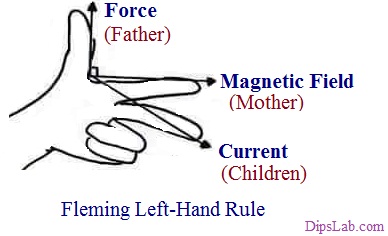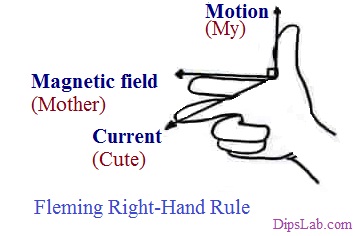
In electrical engineering, the foremost topic is Electrical Machines. The electrical machines consist of two major parts one is the electrical motor and another is the generator. Both are electromagnetic devices.
Is a motor and a generator the same thing?
No. Motor and generator have basic differences such as working principle, representation, block diagram, applicable electrical machine rules, types, uses, examples, and many more.
Let’s describe what is the main difference between motor and generator in tabular form.
Electric Motor vs Generator
| Sr.No. | Content | Electric Motor | Electric Generator |
| 01 | [Definition] What is a motor & generator? | The device which converts electrical energy into mechanical energy is called an ‘Electric Motor’. | The device which converts mechanical energy into electrical energy then this device is called a ‘Generator’. |
| 02 | Representation | It is signified by ‘EM’ or ‘M’. | It is signified by the ‘G’. |
| 03 | Electric Power | Electricity or electric power is used in an electric motor. | Electricity or electric power is produced in an electric generator. |
| 04 | Fleming’s left & right-hand rule for motor & generator | It works on the basis of Fleming’s Left-Hand Rule. | It works on the basis of Fleming’s Right-Hand Rule. |
| 05 | Motor and Generator Principle | The principle of DC motor is – When a current-carrying conductor is placed in the magnetic, it experiences a mechanical force. | Whereas, the principle of the generator is based on Electromagnetic Induction. |
| 06 | What is motor & generator inputs? | The electric motor takes input in the form of an electrical source (like the power grids). | The generator takes input in the form of a mechanical source (like the steam turbines). |
| 07 | What is motor & generator outputs? | It generates mechanical power. | It generates electrical power in the form of AC or DC. |
| 08 | Working role of Electric Current | In the motor, the current is supplied to the armature windings. | In the generator, the current is produced in the armature windings. |
| 09 | Motor and generator types (ac & dc motor and ac & dc generator types) | Based on the sources, an electrical motor is classified into two different types. – AC Motor (Synchronous & Induction Motors) – DC Motor (Series, Shunt & Compound Motors) | Based on the sources, an electrical generator is classified into two different types. – AC Generator (Alternator) – DC Generator (Dynamos) And other types of generators are portable, standby, and inverter types. |
| 10 | What are the examples of motor & generator? | Fans, blowers, pumps, machine tools, cars, elevators, etc. are examples of electric motors. | Based on the sources, an electrical generator is classified into two different types. – AC Generator (Alternator) – DC Generator (Dynamos) Other types of generators are portable, standby, and inverter types. |
Study here further details of Types of Electric Motors.
11. Block diagram of a motor-generator set
You can easily understand the workings of the electric motor and generator through the following block diagram.
- Electric Motor Diagram:

- Generator Diagram:

12. Fleming’s rules for motor and generator:
- Which rule is used in motor?
In the electrical motor, force, magnetic field and current are working as per the Fleming left-hand rule.
From following the figure, you can easily understand what is Fleming left hand rule.

You can remember the Fleming left-hand rule by using a short trick (father-mother-children).
- Which rule is used in generator?
Generator work on the Fleming right hand rule.
I have mentioned the relationship between the current, force or motion, and magnetic field that helps to understand what is Fleming’s right hand rule.

You can remember the Fleming right-hand rule by using a short trick (My mother is cute).
Thus, this diagram helps to understand what is the difference between Fleming’s left-hand rule and Fleming’s right-hand rule.
All the basic12 points has covered difference between electric motor and generator.
Many of the students get confused between these two electrical devices. I tried my best to make it simple.
If you have any queries or any points to mention about motor vs generator, please comment below.
Other related some difference:
- Stator vs Rotor
- Power vs Energy
- Active Power vs Reactive Power
- Alternator vs Oscillator
- Alternating Current Vs Direct Current
- Electrical Circuit Vs Magnetic Circuit
- Synchronous Motor Vs Induction Motor
- Core Transformer vs Shell Transformer
Thanks, for Reading!
Thanks, very well explained.
Thank you so much, Muqtar.
Good explanation.
Thank you, Rick.
Hey Dipali Chaudhari
This is very useful information. I loved it. keep sharing this of the post .
Thank you, James
thanks for detailed knowledge
Most welcome.
Useful tutorials for the electrical beginners.
Thank you, Ell Mrgo.
Thank you
You’re most Welcome.
Very helpful to Electrical students.
Thanks, Sunil 🙂